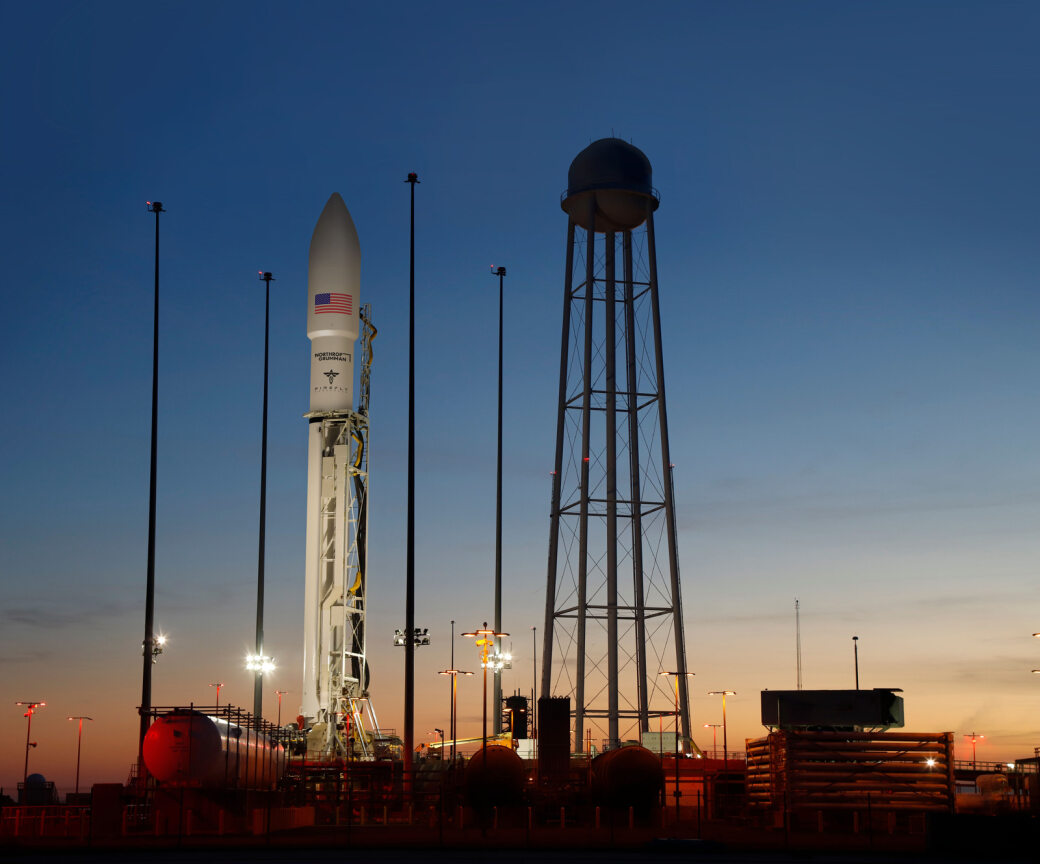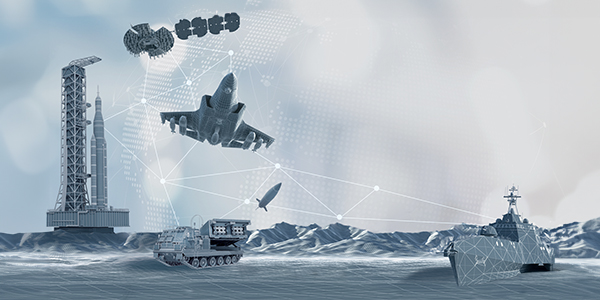
Close up of a man looking at a large computer monitor which is displaying a map of the world along with numerical data lines linking locations on the Earth. (Getty Images)
WEST 2024 — The Marine Corps wants to “shamelessly integrate” the various Combined Joint All Domain Command and Control (CJADC2) efforts from the military services to become an integrator for the joint force under its newly dubbed Project Dynamis program, a service official said today.
Speaking at a panel here, Marine Corps Chief Technology Officer Kevin Murray said that the Marine Corps knows it can’t “solve JADC2 for everybody,” in part because the service doesn’t have the money or the amount of people to do so.
Instead, the service sees itself acting as the integrator for the joint force through Dynamis, its own contribution to the sprawling CJADC2 concept to connect sensors and shooters through all domains. While Murray didn’t reveal details on the scope of Project Dynamis, the effort has four key components, USNI News reported Wednesday.
Those reportedly include modernizing the service’s command, control, communications and computers network; transitioning to the cloud; structuring data for technologies like artificial intelligence and machine learning; and educating its workforce.
Today Murray said that instead of experimenting with service-unique capabilities, the Marines in the past few years have collaborated jointly with the other military services in experimenting, wargaming, and modeling and simulation efforts related to CJADC2.
“But the fact that we have done all this … through the Army’s Project Convergence, the Navy’s Project Overmatch, the Air Force with [the Advanced Battle Management System] … and our other government agency partnerships, we have largely come to a point now after five years of force design where we feel very comfortable and confident in saying that we have an opportunity to become the integrator in CJADC2 for the joint force,” Murray said.
The Army is currently gearing up for its next Project Convergence capstone event this spring and is planning to test two new soldier-robot prototyping formations as it collaborates with the other services and its partner nations. Meanwhile, the Navy remains cagey with its plans regarding Project Overmatch.
The Air Force is ramping up it’s Advanced Battle Management System CJADC2 contribution, since renamed DAF Battle Network, with Brig. Gen. Luke Cropsey telling reporters last August that the service wants faster development of the system and is creating new architecture for CJADC2 “kill chains.”
But today Cropsey said the service’s CJADC2 plans were “completely hamstrung” by a delayed budget. Speaking to reporters at the AFA Warfare Symposium, Cropsey said he’s been waiting months for what was supposed to be a doubled fiscal 2024 budget that would have impacted the service’s CJADC2-related initiatives.
Similarly, in January, an official within the Pentagon’s Chief Digital and Artificial Office (CDAO) said the department had reached a minimal viable capability for CJADC2, but without a budget in place, the capability was essentially inaccessible.
At the time, deputy CDAO Margaret Palmieri described the capability as “largely a connection of existing capabilities that we have today that have shared data in new ways and have brought together a combination of new applications [and] new data services with users to create better workflows.”












